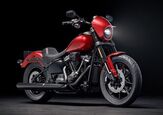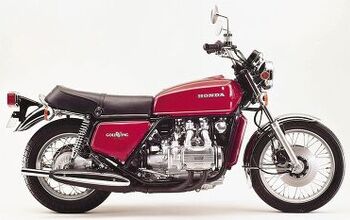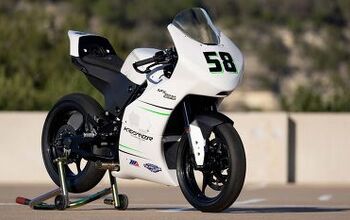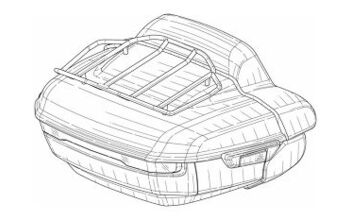What To Look for in a Motorcycle Exhaust
Picking the right exhaust system for your motorcycle shouldn't be tough
Take a poll of your fellow riders and ask what the first upgrade they'll make to a new motorcycle. We bet that you'll often hear upgrading the exhaust system as the first answer. Replacing your stock exhaust system has several benefits beyond the dyno. Yes, we know that a freer-flowing system can enhance peak performance figures, improve the exhaust tone and reduce weight. Better yet, owners can often do this kind of work independently in the comfort of their garage. The aftermarket is chockfull of options, so how do we know what to look for in a motorcycle exhaust? Things can get tricky, so today, we'll cover all the basics behind motorcycle exhaust to ensure you know what you're buying.
Disclaimer: Modifying your motorcycle exhaust may void your motorcycle's warranty and/or violate local or federal law. Be sure to check whether you ride in an area that allows alterations to your exhaust system and avoid any trouble with the law. Motorcycle.com does not condone or advise using modified exhaust systems on public roads in any capacity unless certified as 50-state legal replacement components.
Promoted Product: Cobra Raven Black Body 4.5" Gen 2 Neighbor Haters Series Mufflers
The Cobra Raven Black Body 4.5" Generation 2 Neighbor Haters Series Mufflers are a 50-state legal emissions replacement part for all 2017-2022 Harley-Davidson FL Touring models. The Gen2 NH is available in chrome or black colors and is accented by precision-machined billet aluminum tips featuring distinctive dual grooving. Fitting these replacement slip-on mufflers use a 2.25-inch louvered core to achieve a deeper, richer sound than stock Harley-Davidson mufflers and are specifically designed to bolt directly to stock headers. The less restrictive internal design allows more flow and power, which will be helpful once owners continue upgrading their engines with performance parts.
Get the right parts for your bike with the Dennis Kirk My Garage Tool.
Cheap Thrills
Upgrading your motorcycle's exhaust is so popular because it's one of the most cost-effective performance upgrades an owner can make. Adding a slip-on or complete exhaust system can have a handful of positive effects on your bike and the riding experience. What other part can single-handedly increase engine performance, reduce weight, improve sound, and enhance your bike's appearance? None.
Exhaust Types
Take a look at any retailer for exhaust systems, and two major categories stand out: Slip-on mufflers and full exhaust systems.
A slip-on muffler, often called a "slip-on," replaces the existing muffler while utilizing the existing mid and header pipes. In most cases, a slip-on muffler will not dramatically impact performance, though it will often alter the exhaust tone by a significant margin, which may be what a rider is looking to achieve. These are incredibly simple to install and a generally affordable option. Many OE and aftermarket manufacturers offer CARB and EPA-compliant slip-on mufflers that only serve to improve sound quality.
A full exhaust system is far more involved and replaces the entire stock system, which includes new mid and header pipes. Full exhaust systems are typically designed with performance gains in mind, meaning that they eliminate all emissions-related equipment to maximize airflow and expel gasses as efficiently as possible. That means catalytic converters will be removed, usually saving a significant amount of weight compared to the stock unit. However, it does mean that these systems are for off-road or racetrack use only.
To Tune or Not to Tune, That Is the Question
A commonly raised question is whether you must tune your motorcycle's ECU when an owner has replaced any exhaust components. The short answer is: It depends.
In most cases, a slip-on muffler doesn't significantly impact expelling gasses, and a modern ECU can typically compensate for the change, especially when discussing CARB or EPA-compliant slip-on solutions. Due to that, a slip-on muffler won't add any meaningful performance to your motorcycle. Our friends at Dennis Kirk have plenty of street-legal exhaust offerings.
However, things get complicated if the slip-on muffler removes restrictive elements like the catalytic converter, commonly located in stock muffler units. If that is your situation, tuning may need to be performed because you're unrestricting the exhaust by a notable margin.
It's a different story when running a full system. We mentioned that these exhausts are more involved systems to install from a labor standpoint, but there's more to it than that. You must have the ECU tuned to realize any performance gains and, more importantly, allow your engine to run correctly. Remember, a full exhaust system significantly modifies your engine's ability to expel exhaust. So, the stock air/fuel ratio just won't do. Achieving higher peak performance figures is just one small part of it, as a well-designed tune can radically improve throttle response and power delivery. Trizzle did a deep dive on this exact subject, which you'll want to read up on here, and also detailed his tuning experience on his long-term Yamaha MT-10.
Remember that any full system will require updating your ECU in some capacity. We strongly encourage owners to work with an experienced tuner and seek the recommendation of the exhaust manufacturer for optimal results.
Materials and Craftsmanship Matter
Motorcycle exhausts come in all shapes and sizes, but they also vary in build quality. We've all seen OE exhaust systems built out of cheap mild steel that quickly weathers. However, a common upgrade with higher-quality aftermarket exhaust systems is the use of stainless steel, which is far more corrosion-resistant than mild steel and much more robust. Overall, it's a far superior material to use for exhaust systems.
Exotic materials such as titanium offer the same benefits: they're incredibly strong systems but are significantly lighter, too. Though, that does come at a premium.
Looking at the muffler, various materials are used, such as stainless steel, titanium, or even carbon fiber. Titanium and carbon fiber will often be lighter than mufflers assembled with stainless steel shells, though it will typically come at a premium. Notably, it allows owners to have a choice in visual aesthetics.
Overall, craftsmanship is something to consider, too. After all, you're shelling out good money for a part you hope will be long-lasting. While we don't expect MOrons to be certified welders, understanding the difference between shoddy work and high-quality stuff is straightforward. Smooth, uniform welds free of cracks, slag, or porosity are the hallmarks of a good weld. The color of the welds should be consistent, while the bead profile should also lay flat.
Pump Up the Volume
Motorcycles keep us young, which is a roundabout way of saying that we haven't matured past high school. When a motorcycle vrooms past with a soulful-sounding exhaust, most two-wheeled enthusiasts will nod in appreciation.
Each slip-on and full exhaust system will have its unique exhaust note. In addition, many exhaust manufacturers publish measured decibel figures with their products. It's helpful to know because you may not want to exceed noise limits set by local or state law. In addition, many riders hope to enhance their exhaust note without making their bike the loudest one on the block.
Make Sure It Fits!
This tip almost goes without saying, but exhaust manufacturers spend lots of time ensuring their products fit as intended. Why bring it up? Well, motorcycle manufacturers will share engines between a multitude of models. The same slip-on muffler or full exhaust system should fit, right? Not quite. Different models may have different mounting points for various exhaust parts despite sharing an engine. Save yourself the hassle to make sure what you're buying fits your bike.
There you have it, ladies and gentlemen. Upgrading or replacing your current motorcycle exhaust system is a simple procedure and there are a handful of considerations that riders need to be aware of before ordering new parts. Have any tips or questions? Drop them in the comment section below
Become a Motorcycle.com insider. Get the latest motorcycle news first by subscribing to our newsletter here.
More by Edward Narraca




































Comments
Join the conversation
I like to replace mid-pipe catalyzers with free-flowing mid-pipes while utilizing the OEM slip-ons. Remap to get the corrected air:fuel ratio all the while looking “stock” in a “sleeper” kind of way… see appropriate air box mods as well.
I leave the stock exhaust on and save my money.
I subscribed to MOTORRAD magazine for over a decade, an informative German motorcycle magazine that came out 26 times a year. It made our motorcycle magazines look like a comic strip.
MOTORRAD would test several exhaust systems for a particular model a few times a year. With HP and Torque curves, none of them produced more performance than stoc, in fact lower where most of us rev in.